Centers of Human Tissue Biomineralization (Calcification)
Article Information
Maciej Pawlikowski*
AGH University of Science and Technology, Department of Mineralogy, Petrography and Geochemistry, Lab. Biomineralogy, 30-059 Krakow, al. Mickiewicza 30, Poland
*Corresponding Author: Maciej Pawlikowski, AGH University of Science and Technology, Department of Mineralogy, Petrography and Geochemistry, Lab. Biomineralogy, 30-059 Krakow, al. Mickiewicza 30, Poland
Received: 13 November 2017; Accepted: 04 December 2017; Published: 07 December 2017
View / Download Pdf Share at FacebookAbstract
Biomineralization of tissues includes both mineralization processes that are necessary for the functioning of the organism and those that are harmful for it. This article discusses both types of mineralization, with particular focus on the occurrence of the so-called crystallization centers, i.e. places where the mineralization begins. Primary and secondary crystallization centers are distinguished. Characteristics of developing biomineralization and its consequences are discussed.
Keywords
Biomineralization; Calcification; Collagen
Article Details
1. Introduction
Calcification phenomena, otherwise called biomineralization of tissues, are widely known and described in literature [1-3]. So far, there is no complete description of that process from the mineralogical and biochemical point of view. this article is intended to provide more detailed information on those processes.
tissue mineralization is a phenomenon both necessary (bones, teeth) and potentially deadly for the organism (mineralization of arteries, heart components, cartilage, brain, lungs, tumors, etc.).
two components are required for development of either type of mineralization-: mineralizing substances and crystallization centers, i.e. places where the mineralization can start. In the absence of either of these conditions, tissue mineralization is impossible. this rule applies both to the necessary and the harmful type of mineralization.
the objective of researching mineralization and understanding ways of its development is to prevent "calcification" and, if it is already present, to dissolve it. this problem can not be overestimated because it results in many diseases and, consequently, death.
tissue mineralization, especially the harmful type, can be hidden or overt [3-5].
Hidden mineralization does not manifest either macroscopically or microscopically. It can only be detected by sensitive chemical methods. Despite the "normal" appearance of such mineralized tissues, they show elevated contents of various elements. those elements get built into biological structures, replacing atoms in the atomic structures of different organic compounds, or settle into damaged sites of these structures. Mineralization can either stop there or evolve into overt mineralization.
Overt mineralization is recognizable macroscopically and microscopically. It’s represented by a variety of forms such as mineral grains, plaques (e.g. atherosclerosis) or even crystals.
1.1 Bones
Bone mineralization is the mineralization of bone collagen by the alkaline phosphatase produced by the osteoblast. Bone collagen has genetically programmed crystallization centers in which alkaline phosphatase crystallizes into carbonate hydroxyapatite. those centers are places in the atomic structure of collagen that contain free bonds, i.e. electrical charges. they make cations and anions from adjacent alkaline phosphatase connect to the collagen, building microcrystals of carbonate hydroxyapatite (Figure 1). Filling all the crystallization centers in bone collagen and full development of the crystals building in them takes a dozen years and results in complete development of bone. thanks to this process the bone achieves its optimum strength parameters.
Understanding this process, especially the factor or factors of osteogenesis, is important both in the case of bone adhesions and, for instance, development of bone cancer. It is essential in many bone diseases, including those related to their under-mineralization or over-mineralization. It may also prove to be crucial in the fight against osteoporosis [2,6-10], because stimulating bone to rebuild itself could not only stop osteoporosis, but bring the bone to perfect condition. Positive effects of being able to stimulate this process are impossible to overestimate.
the basic problem is restarting the production of alkaline phosphatase by osteoblast mitochondria, and generating collagen with crystallization centers. Creating these two elements is the basis of osteosynthesis and, for example, regeneration of trabeculae damaged by osteoporosis.
the occurrence of crystallization centers is also connected with demineralization of bone and deterioration of trabeculae. the conditions for this deterioration include such a pH to dissolve the carbonate hydroxyapatite in bone collagen. It dissolves when the pH is lower than 6.6, i.e. when the environment is "acidic" [7,9,10]. "Acidification" of the natural bone environment takes place when excess CO2 is present. this is the case, for example, when the microvessels in bone are blocked and the gas, which is a product of bone cell metabolism, can not be eliminated. Such situation occurs when the bone microvessels are "clogged" [9,10]. Carbonate hydroxyapatite crystals are dissolved, forming holes in collagen, which is then more easily destroyed. the result is loss of trabeculae and weakening of physical parameters of bone, which becomes more susceptible to breaking.
1.2 Arteries and heart components
Arteries (from small to large) are mineralized, while veins are not [11,12]. this is connected with the chemistry of blood in both types of vessels. Oxidized arterial blood is slightly alkaline, while venous blood, containing CO2, which easily forms carbonic acid, is slightly acidic. this difference is sufficient for phosphate mineralization to occur in arteries, but not in veins [13-16].
Mineralization in arteries occurs both in their walls and the inner surface that is covered by endothelium. Arterial mineralization can be hidden or overt. It leads to various types of arterial dysfunctions that are dangerous to humans. Such mineralization usually comes in the form of phosphates, including carbonate hydroxyapatite, cholesterol, fats, and others.
For arterial mineralization to develop, two conditions must be met: mineralizing substance in arterial blood, and crystallization centers in the artery. the causes of increased amounts of "mineralizers" are varied and will not be discussed here. Likewise with the centers of crystallization (mineralization) of cholesterol, calcification, etc. those centers, i.e. places where for instance "atherosclerotic plaque" can develop, may be genetic and transmitted from generation to generation. they may also be secondary, i.e. be the effect of mechanical destruction of arteries as a result of excessive physical effort, influence of chemicals or particles entering the body (the bloodstream) from the outside. they may also develop as a result of infection.
In that case, the artery walls, their inner surfaces (intima), and parts of left heart damaged by the toxins that result from the metabolism of the infecting microorganisms. the effects of this interaction are places where the atomic tissue structure is destroyed. Resulting damaged sites are characterized by the presence of free chemical bonds that are endowed with electrical charges. these are crystallization centers, where the process of mineralization of damaged arteries and heart components can begin (Figure 2 and 3). those centers are incidental, hence their random locations.
they may coexist with centers of another genesis (genetic, etc.), blurring the image of their origins.
Formation of crystallization centers (development of calcifications) in the artery wall itself has a similar mechanism. Structural defects here, e.g. in tunica media, may have genetic, mechanical, or infectious background. Initiation of crystallization takes place in those spots. Its effects are widely known. Both types of mineralization, i.e. in the endothelium and the wall, often coexist in the examined arteries. their placement is incidental and related to localization of tissue damage. It may affect both large and small arteries, although the latter, due to their small diameter, seem predisposed to faster mineralization.
An interesting phenomenon is mineralization (crystallization) developing in tissues as related to solubility product of various substances. None of the substances mineralizing tissues are present in those tissues or body fluids in excess of their solubility product. Exceeding those values (the amount of "mineralizers") would mean destruction of the body, and yet the crystallization of tissues is a common phenomenon.
Studies show that tissue mineralization is achieved through ionic currents, and not by exceeding the solubility product. this phenomenon can be described as follows: At the crystallization center, due to the destruction of atomic biological structures, electrical charges occur. they are the "magnet" that captures electrically charged ions flowing by. the captured ions not only bind with the defective structure in a specific way, but, having electric charges themselves, they catch additional ions. In this way, the formation of crystals, concretions, atherosclerotic plaques etc. begins and continues.
It is interesting that the result of such mineralization in arteries and heart components are not only inorganic crystals (e.g. hydroxyapatite) or cholesterol, which is also a crystalline substance, albeit an organic one. the result of this process can be mixed organic-mineral or mineral-organic crystals with different proportions of both components (Figure 4). this occurs when arterial blood has elevated levels of each component, i.e. calcium, phosphorus and cholesterol. this is not only scientifically interesting, but creates additional, serious problems in the attempts to dissolve such mineral-organic substances [16].
1.3 Lungs
Calcifications, or lung mineralization, develops, especially after infections, like in other tissues. Microorganisms that cause infections spread in the lungs especially when the infection is transmitted by air. those microorganisms (bacteria, viruses, fungus, etc.) multiply in the lungs and secrete various toxins as products of their metabolism. the amount of these toxins and their effect on, among others, the alveoli, increase along with the multiplication of the microorganisms in the lungs and the whole body. At this stage of infection, we see the increase in the destructive effects of these toxins on the lungs, but also other organs, because toxins circulate in the bloodstream throughout the body.
this stage of disease is the development of the process of lung tissue destruction and formation of centers of future crystallization. Lungs are a special place where the exchange of CO2 in venous blood for oxygen circulating in arterial blood takes place. this process changes the pH from slightly acidic in venous blood to slightly alkaline in arterial blood. Due to this change of chemical conditions, there is a possibility of calcification (mineralization) developing in the arteries transporting oxidized blood in the lungs. However, in healthy, non-infected body there are no crystallization centers (damaged tissues) so calcifications do not develop.
From the point of view of physicochemistry of the environment, crystallization is not possible. they do not appear in the development phase of infection either, because the toxins produced by microorganisms are acidic (CO2, organic acids, etc.) and prevent crystallization of phosphates - main components of calcifications.
the situation changes when the body heals, which is when the infectious microorganisms are systematically removed from the organism. the "environment" of the lungs turns from infected and "acidified" back to its normal, original conditions. the pH increases to slightly alkaline and the chemical conditions for the crystallization of calcium phosphates (calcifications - Figure 5) appear. In addition, after the infection there are spots in the lungs that have been damaged by toxins from the infecting microorganisms - or crystallization centers. the process of crystallization of calcifications in the lungs begins, which we can then see on x-ray. the formation of calcifications undoubtedly worsens the gas exchange in the lungs, so it is an unfavorable phenomenon.
Can the process of calcification of the lungs and the whole organism be reduced? No doubt, the way is to reduce the number of crystallization centers, i.e. to limit the amount of toxins produced by infecting microorganisms. the method is to quickly stop the proliferation of infectious microorganisms through the use of appropriate drugs, including antibiotics.
1.4 tumors
In tumor tissues, elevated content of elements [1,17-20] and intense development of blood vessels [21-24] are observed. Mineralization is usually hidden and its quantities are small, so it can be determined only using sensitive chemical methods. Sometimes, however, massive "calcifications" appear in tumors. they are typically mineralized with calcium phosphates.
Studies show that mineralization of cancer sites may have two fold origin. the first phase of mineralization is when body fluids are mineralized in tissues. Not only elevated amounts of cations and anions (mainly Ca, P, but also others) are present in the fluids, but there are also slightly elevated amounts of charged molecules (carcinogenic ? tarry substance from cigarettes, asbestos, etc.).
Both ions and compounds in the fluids become a danger and can mineralize DNA at the time of cell multiplication. Division of cellular DNA also takes place at that point in time. Different parts of DNA determine different life processes of the cell. One of the parts is a fragment that determines the frequency of cell procreation. Its degradation may lead to acceleration of the multiplication of the cell.
If the cell and DNA division takes place in an environment where there is too little or too much of "mineralizing" substances, a structural defect may be generated throughout the DNA, including in the particular segment that is responsible for the frequency of cell multiplication.
there is a possibility of this defect to appear in different parts of the DNA segment responsible for the multiplication of the cell. It is also possible for various substances that are present in the site of the cell multiplication to attach to this fragment of DNA.
In addition, DNA degradation may occur in cells of different tissues. this is the reason for the vast variety and diversity of tumors that occur. the whole process, from the mineralogy point of view, can be called biomineralization of DNA, which in this case leads to the development of neoplastic processes, i.e. cancer (Figure 6, table 1).
Element |
Content (weight %) |
|
Na |
0 |
|
Mg |
0 |
|
Al. |
0 |
|
Si |
0 |
|
Ca |
4,34 |
|
Fe |
0,67 |
|
Sn |
0,59 |
|
P |
3,58 |
|
S |
2,89 |
|
K |
0 |
|
Cl |
0 |
|
N |
0 |
table 1: Results of chemical analysis of the sample at point 19-1-1 (Figure 6)
tests of neoplastic tissues also indicate that the propagating cells themselves can be further mineralized in the later stages of the cancer process. this suggests that tumor cells (probably not of all types of tumors) have ability to change the local chemistry of the environment of the developing tumor [1,17-19,25,26].
these overlapping processes create an extremely complex and difficult to analyze image. Especially since the tumor biomineralization, which we observe radiologically or histopathologically, often does not reveal minute, subtle, yet so important changes in tissue chemistry.
We are faced with:
- the original mineralization of body fluids (caused by various factors)
- DNA biomineralization (in different places) during cell division
- secondary mineralization of the tumor (e.g. intercellular spaces) by substances secreted by tumor cells
In addition, the neoplastic process may be stopped at each of these stages. All of these phenomena leading to tumor growth add to the enormous complexity of their treatment.
Conclusion
Knowledge and views on the creation and biomineralization of crystallization centers in selected human tissues were presented. Obtained test results may serve as a basis for further research on, among others: osteoporosis, proper bone mineralization, fighting atherosclerosis by blocking arterial crystallization centers, as well as preventing DNA mineralization in cancer development processes.
References
- Pawlikowski M. Krysztaly w organizmie czlowieka. Crystals of human organism. Secesja 1993: 132.
- Niedzwiedzki t, Dabrowski Z, Miszta H, Pawlikowski M. Bone healing after bone marrow stromal cell transplantation to the bone defect. Biomaterials 14 (1993): 115-121.
- Pawlikowski M., Sekrety mineralizacji tkanek. Secret of tissue mineralization. PAN, Kraków (1995) :97.
- Pawlikowski M., Mineralizacja organizmu czlowieka zyjacego. (Mineralization of human living organism). Prace Mineral 79 (1987): 121.
- Pawlikowski M, Ryskala Z., Charakterystyka mineralogiczno-chemiczna fosforanowej mineralizacji wybranych naczyn tetniczych czlowieka. (Mineralogical - chemical characteristic of phosphate mineralization of human arteries). Roczniki Nauk.- Dyd. WSP w Krakowie Prace Fizjologiczne 1991: 81-104.
- Niedzwiedzki t, Pawlikowski M. Zmiany mineralogiczne zachodzace w obszarze gojenia zlaman kosci dlugich. Mineralogical phenomena observed at healing part of broken bones. Chirurgia Narz. Ruchu i Ortop Pol 1990 : 277-281.
- Pawlikowski M., Niedzwiedzki t., Mineralogia kosci. Mineralogy of bones. Wyd. PAN Oddzial w Krakowie 2002: 128.
- Pawlikowski M. Osteoporosis as a source of tissue mineralization. Research on osteoporosis therapy and dissolution of arterial mineralization. Jour Life Science 8 (2014): 610-625.
- Pawlikowski M., Biomineralogical investigation of apatite piezoelectricity. traumatologia i ortopedia Rosiji 2 (2016): 58-63.
- Pawlikowski M. Biomineralogy of osteoporosis. Academia Journal of Biotechnology 4 (2016): 138-144.
- Pawlikowski M, Ryskala Z., Charakterystyka mineralogiczno-chemiczna fosforanowej mineralizacji wybranych naczyn tetniczych czlowieka. (Mineralogical - chemical characteristic of phosphate mineralization of human arteries). Roczniki Nauk.- Dyd. WSP w Krakowie Prace Fizjologiczne 1991: 81-104.
- Pawlikowski M. Preliminary results of dissolution of substances mineralizing human arteries. Arch. Mineralog 52 (1999): 195-210.
- Pawlikowski M, Pfitzner R. Zastosowanie metod mineralogicznych w badaniach tkanek czlowieka. I. Sposoby badania mineralizacji. (Mineralogical methods useful for examination of human tissues). Przegl. Lekarski 52 (1995): 119-123.
- Pawlikowski M, Pfitzner R Zastosowanie metod mineralogicznych w badaniach tkanek czlowieka. II. Mineralizacja struktur serca. Mineralogical methods useful for examination of human tissues. Mineralization of heart structures. Przegl Lekarski 52 (1995): 24-27.
- Pawlikowski M., Minerals in human blood vessels and their dissolution in vitro. In: Skinner HCW, Berger AW, Geology and health. N.Y. – Oxford. Oxford University Press 2003: 155-158.
- Pawlikowski M., Pfitzner R. Mineralizacja serca i duzych naczyn. Mineralization of heart and big blood vessels. Wyd. IGSMiE PAN Kraków 1999: 142.
- Pawlikowski M., Mineralizacja nowotworowa (Mineralization cancer). W: Biomineralizacja i biomaterialy. PWN, Warszawa 1991: 84-92.
- Pawlikowski M. Biomineralization of cancer tissues. 20th Int. Symp. Molecular and Physiological Aspects of Regulatory Processes of the Organism. Cracow. Ed. H. Lach. Wyd. Abaton. Kraków 2011:190-191.
- Pawlikowski M., Mineralizacja guzów nowotworowych pluc. (Mineralization of lung cancer tumors. Auxiliary sciences in archaeology, preservation of relicts and environmental engineering (2013a) CD -no 15, Ed. M. Pawlikowski.
- Pawlikowski M., Miler M., Biomineralogy of selected skin cancer. SM Dermatolog J 3 (2017): 1017
- Harper J, Moses MA. Molecular regulation of tumor angiogenesis: mechanisms and therapeutic implications. EXS 96 (2006): 223-268.
- Eichholz A, Merchant S, Gaya A. Anti-angiogenesis therapies: their potential in cancer management. Onco targets therapy 3 (2010): 69-82.
- Pawlikowski M, Kwinta A, Zwolinska B, Kwinta K. Green fiber lasers in urology. Folia Med Cracov 53 (2013): 23-34.
- Kurzyk A. Angiogenesis - possibilities, problems and perspectives. Postepy biochemii 61 (2014): 25-34.
- Pawlikowski M., Electric phenomenon in bones as a result of piezoelectricity of hydroxyapatite. Arch Clin Biomed Res 1 (2017): 132-139.
- Pawlikowski M., Biomineralogy of angiogenesis. Arch Clin Biomed Res 1 (2017): 161-167.

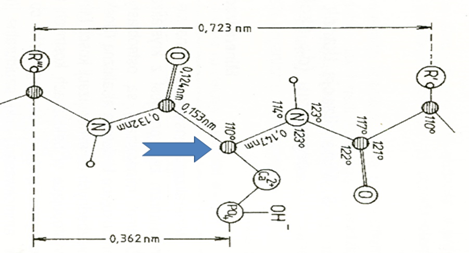
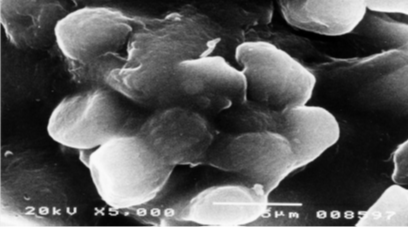
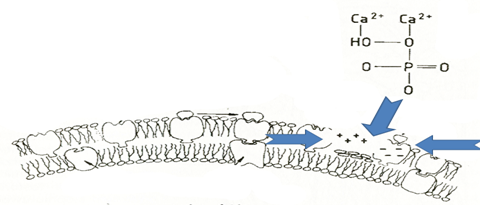
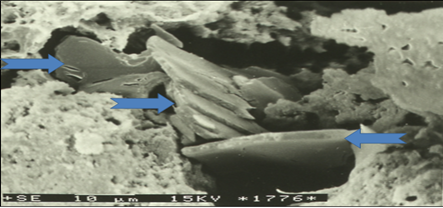
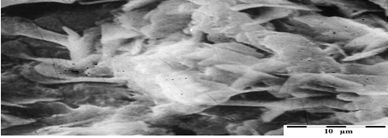
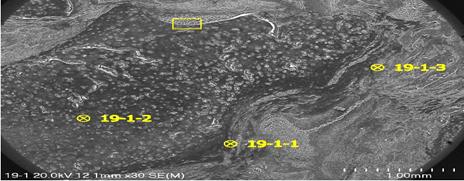

 Impact Factor: * 3.5
Impact Factor: * 3.5 CiteScore: 2.9
CiteScore: 2.9  Acceptance Rate: 14.80%
Acceptance Rate: 14.80%  Time to first decision: 10.4 days
Time to first decision: 10.4 days  Time from article received to acceptance: 2-3 weeks
Time from article received to acceptance: 2-3 weeks 